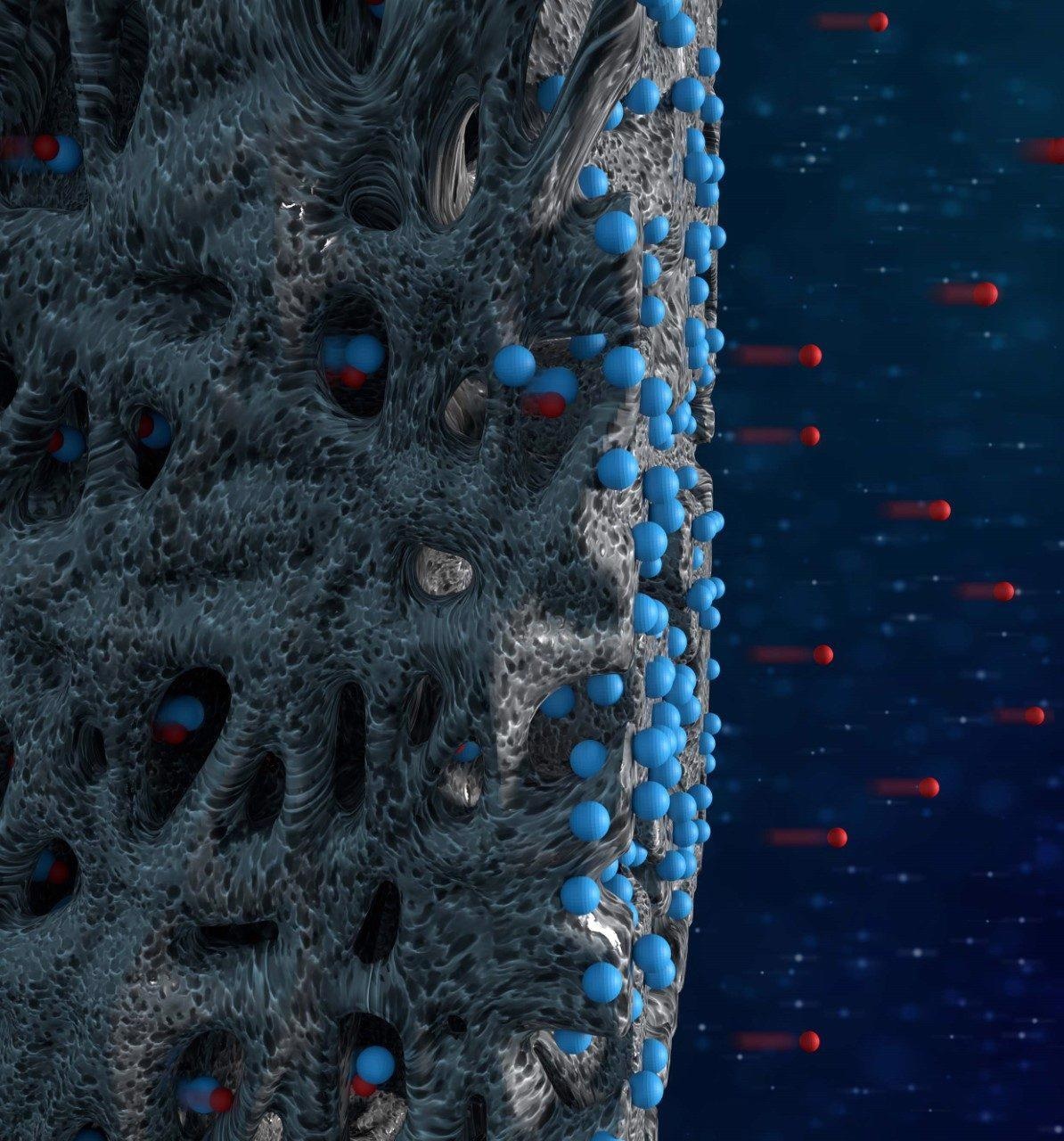Researchers from Technion, Wageningen University and Wetsus have come up with an affordable and efficient means to eliminate harmful boron from water through the process of desalination.
 Process of dissolved boron removal using a capacitive deionization cell. First, the cell dissociates boric acid to charged boron ions. The boron ions are then stored in the electrodes. Image Credit: Paul Gerlach, Houten, The Netherlands.
Process of dissolved boron removal using a capacitive deionization cell. First, the cell dissociates boric acid to charged boron ions. The boron ions are then stored in the electrodes. Image Credit: Paul Gerlach, Houten, The Netherlands.
In Israel, nearly 80% of drinking water is desalinated water sourced from the Mediterranean Sea. Researchers from the Technion – Israel Institute of Technology, the Wageningen University and Wetsus (European center of excellence for sustainable water) in the Netherlands have collaboratively developed a method to enhance the desalinated water’s quality while decreasing the process charges.
The findings of the international group were reported in the PNAS (Proceedings of the National Academy of Sciences of the United States of America).
The process of eliminating mineral particles (salts) from saltwater is known as desalination. This makes water suitable for irrigation and human consumption. The chemical properties of a few particles make them more difficult to remove compared to others.
In the Mediterranean Sea, boron is naturally found in great quantities and is one of the hardest ones to remove as a change in acidity makes it alter its properties. It is harmful in high concentrations and damages plant growth, which is considered an issue in the context of irrigation. The general process of boron removal includes dosing the water with a base to streamline the withdrawal of boron, after the removal of the base.
The most frequently utilized technique of desalination is through a membrane — a kind of sieve that enables water to pass through it, while blocking other particles, depending on their size or charge. But this membrane seems to be costly and must be periodically replaced.
PhD students Amit Shocron and Eric Guyes, under the monitoring of Professor Matthew Suss of the Technion Faculty of Mechanical Engineering, along with their collaborators from Wageningen University and Wetsus, have developed a new modeling method to forecast the boron behavior during desalination through capacitive deionization.
This is a novel method for water treatment and desalination that makes use of comparatively inexpensive porous electrodes, rather than the costly membrane. On applying electric current, charged particles (such as boron under high pH conditions) are adsorbed by the electrodes and are thus removed from the water.
Amit Shocron drafted the theoretical framework that enabled this discovery, while Eric Guyes constructed the experimental setup. Developing the novel system was only possible thanks to this collaboration. The team found that for ideal boron removal, the positive electrode must be positioned upstream of the negative electrode — counter to the recognized wisdom in their field.
Furthermore, they evaluated the optimal applied voltage for the system, thereby determining that higher voltage does not necessarily enhance the effectiveness of the system.
This technique developed by the researchers could be utilized to solve other water treatment difficulties as well, for instance, the removal of herbicides and medicine residues, which are hard to remove through traditional methods.
Professor Suss is an Associate Professor in the Faculty of Mechanical Engineering and the Wolfson Department of Chemical Engineering at Technion — Israel Institute of Technology and is affiliated with the Nancy and Stephen Grand Technion Energy Program and Stephen and Nancy Grand Water Research Institute at Technion.
Journal Reference:
Shocron, A. N., et al. (2021) Electrochemical removal of amphoteric ions. Proceedings of the National Academy of Sciences of the United States of America. doi.org/10.1073/pnas.2108240118.